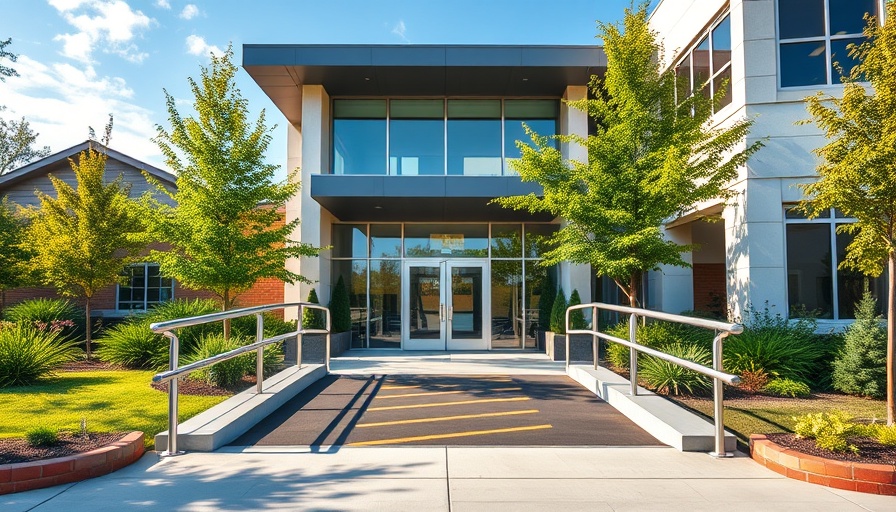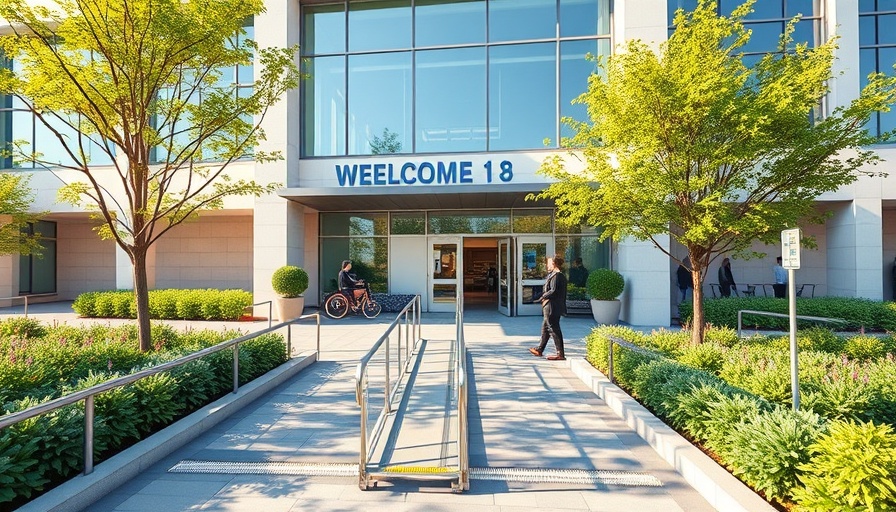
The Importance of ADA Compliance in Toms River
In Toms River, NJ, ensuring all public facilities meet the Americans with Disabilities Act (ADA) standards isn't just a legal requirement; it's a vital step towards inclusivity. The ADA, enacted in 1990, created a framework that promotes equal access for individuals with disabilities, particularly concerning accessible restrooms. While many facilities boast restrooms, a lack of accessibility can lead to discomfort and danger for those with mobility challenges. In contrast, facilities that embrace ADA compliance enhance community relationships and create welcoming environments.
Understanding ADA Compliance Guidelines
Defining ADA compliance involves familiarizing ourselves with the accessibility guidelines known as ADAAG. These regulations detail the essential criteria required for restrooms, emphasizing layout, fixtures, and signage. For instance, accessible stalls must measure a minimum of 60 inches wide by 56 inches deep for wall-mounted toilets, ensuring ample space for wheelchair use. Moreover, the placement of grab bars is critical for safety, with at least one bar on the side and one behind the toilet as standard requirements.
Key Features for Accessible Restroom Design
Before designing or renovating restrooms, facilities must incorporate specific key features for them to qualify as ADA compliant. This includes wider entrances, minimum door widths of 32 inches to ensure wheelchair access. Automatic doors are highly beneficial as they remove manual operation barriers.
Furthermore, fixtures like sinks and toilet seats must be installed at accessible heights; sinks should not exceed 34 inches from the floor, with a minimum clearance beneath of 27 inches. Faucet controls must be operable with one hand, not requiring more than five pounds of force. This consideration allows those with limited hand strength to utilize these facilities independently.
The Role of Signage in ADA Compliance
Clear and effective signage is essential for ensuring ADA compliance as it aids in communication and navigation for all users. Signs indicating accessible facilities must be placed at heights reachable by both seated and standing individuals and incorporate Braille for visually impaired users. Additionally, contrast in colors between text and background enhances visibility, making the restrooms more user-friendly.
Training staff and community awareness
Furthermore, ADA compliance goes beyond structural standards. Staff training is crucial in promoting awareness and sensitivity toward patrons' diverse needs. Effective communication among staff can greatly influence user experience, making facilities more inviting and inclusive. Recognizing the importance of these standards isn’t merely about legal adherence; it's about respect and dignity for all community members.
Embracing Inclusivity Improves Community Image
By prioritizing ADA compliance, facilities in Toms River can significantly boost their public perception. Engaging with local advocacy groups and participating in accessibility initiatives not only increases awareness but also fosters community engagement. As more people recognize and utilize accessible facilities, businesses can thrive through increased patronage and positive recognition.
Tools and Resources for Implementing ADA Guidelines
For Toms River facility managers, several tools and resources are available to assist in implementing ADA guidelines. Consulting with architects or design firms that specialize in accessibility ensures that structures meet required standards while still being functional and aesthetically pleasing. Local government offices and disability advocacy groups also provide valuable insights into best practices, resources for training staff, and support networks.
Common Misconceptions about ADA Compliance
Many remain unaware of the full scope of ADA requirements, leading to common misconceptions. One frequent myth is that ADA compliance is a one-time effort; however, it requires ongoing commitment to accommodate changing regulations and community needs. Regular audits of facility access can facilitate continuous improvement and adherence to standards.
Get Involved in Promoting Accessibility
In conclusion, understanding ADA compliance is crucial not only for legalities but also for fostering an environment where everyone feels welcome. As Toms River moves forward, community involvement in supporting facilities that comply with these standards can help shape a future that values access and equality. Together, we can build a community where accessibility is standard practice, ensuring that every individual can enjoy all aspects of public life.
Join the movement for inclusivity! Advocate for accessible facilities in your area and help ensure that everyone has equal access to restrooms and public services. A small step towards compliance can lead to a giant leap in community acceptance.
 Add Row
Add Row  Add
Add 




Write A Comment